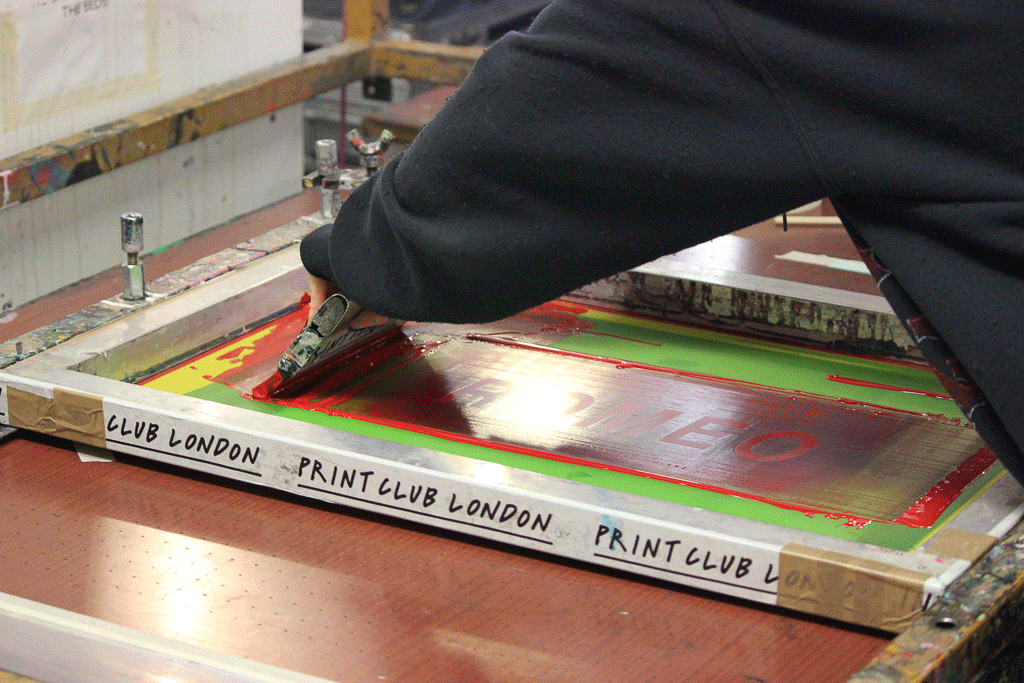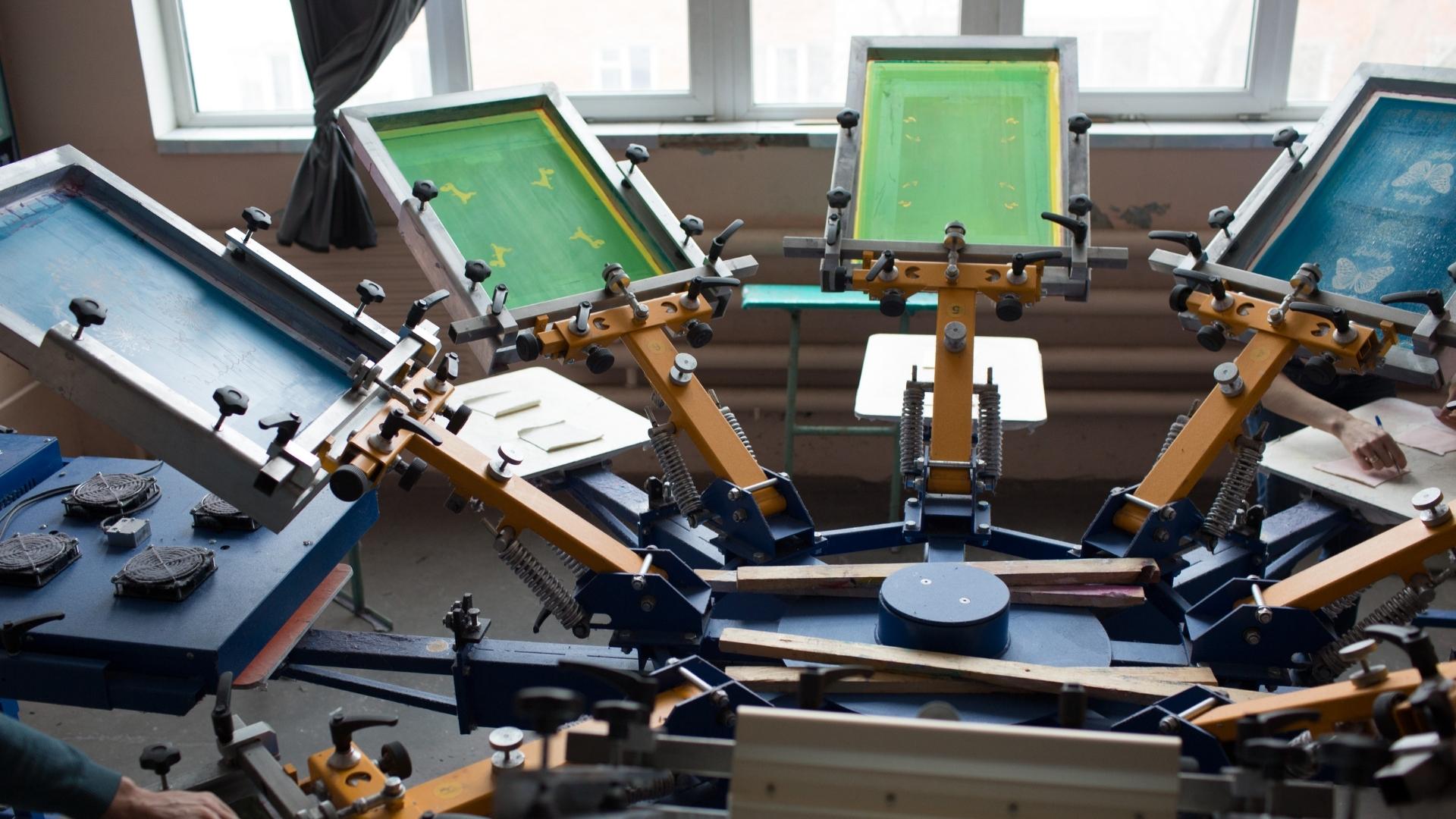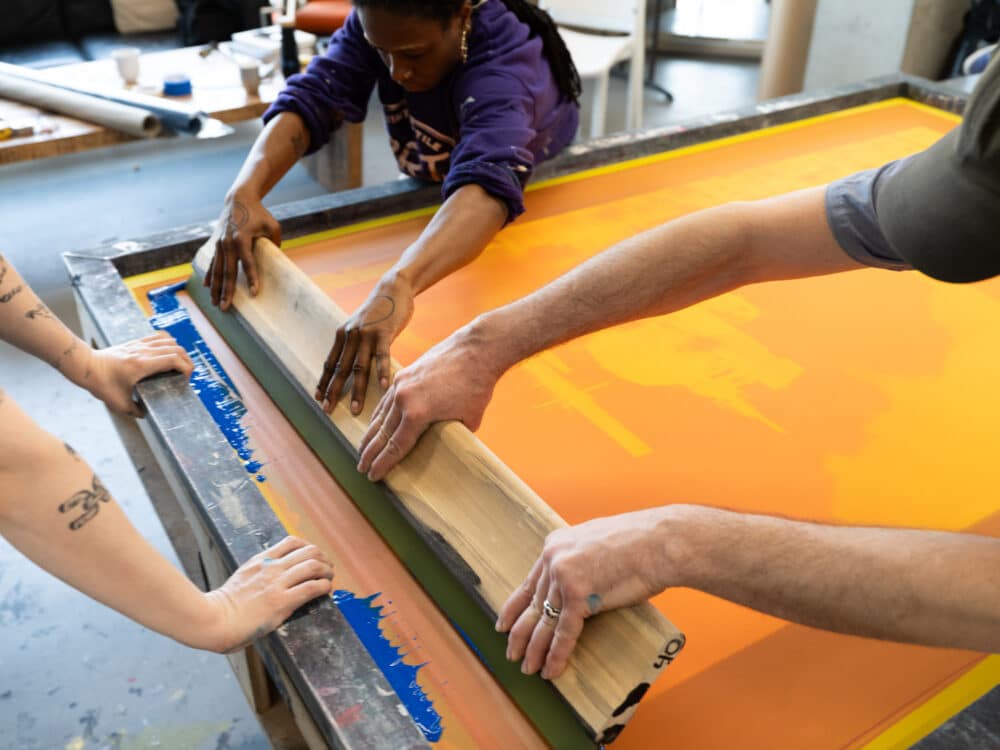ChatGPT said: How to get quick answers through 10:9 Design contact for your next order
Discover the Different Types of Screen Printing Techniques for Your Next Project
Screen printing provides a varied series of strategies that can improve any imaginative job. From traditional methods like serigraphy to modern technologies such as direct-to-garment printing, each technique has its unique benefits. Specialty alternatives, including metal and eco-friendly inks, introduce a lot more opportunities. Comprehending these techniques can considerably affect the last end result. Nonetheless, the difficulty depends on selecting one of the most appropriate technique for details needs and desired impacts. What elements should one consider?

The Essentials of Screen Printing
Screen printing might appear complicated, it is fundamentally a simple process that involves transferring ink through a mesh screen onto various surface areas. The method begins with the development of a pattern, which specifies the style to be printed. This pattern is attached to a mesh screen, normally constructed from polyester or nylon. Once the pattern is in location, ink is applied to the screen and pushed via the mesh using a squeegee, leading to the desired pattern being published on the underlying product.
Screen printing can be executed on a wide array of substrates, consisting of textile, plastic, and paper, making it a flexible choice for different jobs. The process permits intricate designs and vivid colors, making it popular in industries such as style, art, and advertising. Understanding these basics outfits individuals with the fundamental understanding called for to discover more sophisticated methods in screen printing.
Traditional Screen Printing Techniques
Traditional screen printing methods have actually been employed for centuries, maintaining the craftsmanship and creativity of this approach. This approach uses a mesh screen to move ink onto a substratum, such as fabric or paper, permitting vibrant and resilient designs. The process begins with developing a stencil, which blocks certain locations of the screen to control where the ink will be applied.
One popular strategy is serigraphy, typically utilized for creative prints and restricted editions. Another is making use of water-based inks, which are environmentally friendly and offer a soft feel on fabrics - 10:9 Design Texas. In addition, traditional techniques can include hands-on printing, where craftsmens use ink with a squeegee, making certain precision and attention to detail
These strategies remain valued in the market for their tactile top quality and the special textures they create, appealing to both designers and consumers that appreciate the heritage of screen printing.
Digital Screen Printing Innovations
As the need for faster production and customization in the printing sector has actually risen, electronic screen printing innovations have become a game-changer. This modern technology blends standard screen printing approaches with digital procedures, enabling for fast prototyping and elaborate designs that were previously hard to accomplish. One considerable advancement is the introduction of direct-to-garment (DTG) printing, which assists in premium, full-color prints on numerous textiles without the requirement for displays. Additionally, advancements in ink solutions have brought about eco-friendly alternatives that keep lively shades while reducing environmental influence. The use of automated systems further enhances production, lowering labor expenses and improving accuracy. These innovations not only deal with tiny batch orders and personalized designs however additionally enable quicker turn-around times, making them perfect for organizations focused on conference customer needs in a busy market. Digital screen printing, consequently, stands for a crucial evolution in the domain name of printing techniques.
Specialty Screen Printing Methods
Exploring specialty screen printing approaches exposes a diverse variety of techniques that push the boundaries of creativity and performance in the printing industry. Amongst these, glow-in-the-dark inks provide an unique aesthetic result, making layouts come to life in low-light conditions. Metal inks, recognized for their glittering finish, include a touch of deluxe to published products. One more innovative technique is discharge printing, which eliminates dye from the textile instead of adding ink, resulting in a soft, classic feel. High-density printing produces a raised structure externally, enhancing tactile engagement. In addition, water-based inks are getting appeal for their lively shades and lowered ecological effect. Each of these specialty strategies satisfies certain style demands, allowing musicians and brand names to produce standout products that resonate with their audiences. By leveraging these methods, services can elevate their screen printing tasks to new elevations, making certain unforgettable impressions.
Eco-Friendly Screen Printing Options
Green screen printing alternatives are gaining traction as the industry shifts towards sustainability. Sustainable ink choices and making use of naturally degradable products are crucial components in reducing the ecological effect of the printing procedure. By adopting these techniques, screen printers can add to a more lasting future while keeping premium results.
Sustainable Ink Choices

Biodegradable Products Use
As the screen printing sector advances, the consolidation of eco-friendly products is ending up being progressively crucial for ecologically aware practices. Designers and manufacturers are currently checking out inks and substrates made from natural, renewable energies that break down more efficiently than conventional equivalents. These eco-friendly alternatives minimize plastic waste and minimize environmental influence, lining up with the growing demand for sustainable products.
Usual examples consist of water-based inks and organic cotton textiles, both of which decrease dangerous chemicals and promote eco-friendliness. Brands that adopt these products typically enhance their market charm, bring in consumers that prioritize sustainability. As understanding of environmental problems proceeds to increase, the change towards eco-friendly materials in screen printing is most likely to get momentum, cultivating a greener market requirement.
Choosing the Right Strategy for Your Job
How can one establish one of the most suitable screen printing technique for a certain job? The decision rests on a number of factors, consisting of the material to be published on, the intricacy of the style, and the desired production quantity - 10:9 Design LLC Company. For instance, direct-to-garment printing is ideal for complex layouts with various shades, while traditional screen printing excels for bigger runs of simpler graphics
Additionally, consideration of the end-use of the published product is necessary. For outside applications, strategies that use resilience and climate resistance, such as plastisol ink, might be preferred. On the other hand, environmentally-conscious projects might benefit from water-based inks or biodegradable products.
Eventually, understanding the task's unique requirements permits for an enlightened option, guaranteeing both aesthetic appeal and useful long life. By evaluating layout complexity, product compatibility, and manufacturing range, one can effectively choose one of the most proper screen printing method to fulfill their project's goals.
Frequently Asked Questions
What Is the Background of Screen Printing?
Screen printing stemmed in old China around 1000 AD, advancing through Japan and Europe. By the 20th century, it ended up being popular in industrial art and style, revolutionizing exactly how styles were generated and dispersed internationally.

Just how Do I Prepare Artwork for Screen Printing?
To prepare art work for screen printing, one should guarantee high resolution, use a suitable shade mode, create different layers for every shade, and convert text to lays out, guaranteeing compatibility with the printing procedure and desired result.
What Materials Are Finest for Screen Printing?
The very best products for screen printing include high-grade inks, sturdy screens, and suitable substrates like cotton, polyester, or blends. Furthermore, making use of appropriate solution and squeegees can boost the printing process and results.
Can I Screen Publish in your home?
Yes, screen printing in the house is possible. With the ideal materials, configuration, and strategies, people can create top quality prints. Nonetheless, mindful factor to consider of workspace and devices is vital for effective results.

What Prevail Mistakes in Screen Printing?
Usual mistakes in screen printing include inappropriate exposure times, inadequate ink uniformity, misalignment of displays, not enough cleansing of products, and ignoring to test prints. These mistakes can endanger the high quality and accuracy of the end product.
Screen printing may appear complex, it is essentially a straightforward process that includes transferring ink via a mesh screen onto different surface areas. As the demand for faster manufacturing and modification in the printing industry has actually surged, electronic screen printing technologies have arised as a game-changer. Checking out specialty screen printing approaches exposes a varied variety of strategies that push the limits of imagination and functionality in the printing market. The best materials for screen printing include premium inks, durable screens, and ideal substratums like cotton, polyester, or blends (10:9 Design Abilene). Typical blunders in screen printing include incorrect direct exposure times, inadequate ink uniformity, imbalance of displays, insufficient cleansing of products, and overlooking to test prints